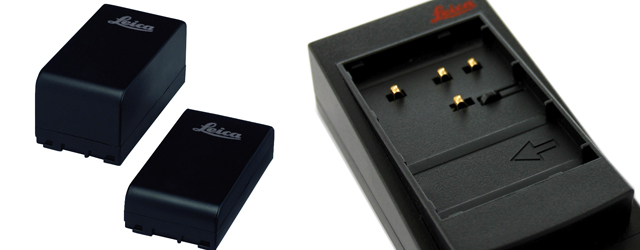
If your batteries run out of power, you can’t use your surveying equipment in the field. Therefore, it’s wise to choose the right batteries and care for them correctly. Follow these tips to keep your batteries in optimal condition, and they’ll serve you well.
Choose the Right Battery Type
- Li-Ion: Lithium ion batteries are environmentally friendly and don’t suffer from diminished memory. They hold the most power.
- NiMH: Nickel metal hydride batteries are the least toxic. They also hold a healthy charge and don’t need to be refreshed as often as NiCDs.
- NiCD: Nickel-cadmium batteries last longer than NiMHs, need charging less often, and can tolerate greater temperature extremes. They are the least expensive, but contain toxic cadmium, which can make disposal a problem.
Use a Reliable Quick Charger
A quick charger that monitors temperature is crucial for charging batteries in a wide range of weather conditions. Look not only for the correct AC voltage, but also for an automobile charging adapter. Check to make sure that your charger accepts the correct battery type(s) before attempting to charge your Li-Ion, NiCD, or NiMH cells. A smart charger contains a microprocessor which regulates the charging process. Not all chargers perform trickle charges, so make sure that yours does if you use NiCD or NiMH batteries.
Charge Your Batteries Wisely
The time it takes to charge your batteries depends on several factors, including how much of a charge your batteries can hold, how depleted they are when you start, and how much power the charger can take. Although your battery may charge as high as 80% fairly quickly, the last 20% will take longer as the battery temperature rises.
Be aware that charging in warm temperatures can permanently damage your battery’s capacity. Ideally, you should charge your batteries in a room between 50 and 68 degrees Fahrenheit. However, you can charge them reliably between 32 and 95 degrees Fahrenheit. Temperature-controlled chargers may shut off temporarily if the battery gets overheated during top-off. Intelligent batteries contain a chip that regulates temperature and remaining charge.
If you leave NiCD and NiMH batteries on a charger, they will trickle charge. However, Li-Ion batteries don’t discharge significantly over time, so they won’t really benefit from being left on the charger. Make it a habit to charge your instrument’s batteries after each day’s work to get the best performance.
Discharge Your Batteries When Needed
Because NiCD and NiMH batteries tend to get “tired,” you may need to refresh them two or three times. Do this by discharging the battery completely, then charging it up again quickly. Colder weather discharges the battery sooner; hot-weather use can shorten battery life.
Maintain Your Batteries Appropriately
The best practice is to use your battery until the instrument it is powering shuts off. Always bring a spare set of fully charged batteries into the field so that you can swap out and keep working. (It’s a good idea to mark the batteries in some way so that you can tell them apart at a glance.) NiCD and NiMH batteries need to be fully charged and discharged a few times to reach their full capacity. If you don’t use a Li-Ion battery for over a year, you should only need to charge and discharge it once to refresh its memory.
Store Your Batteries Correctly
You can store batteries at greater temperature extremes than are needed for charging. For example, Leica Geosystems batteries can be stored between -40 degrees Fahrenheit and 131 degrees Fahrenheit – a range comparable to Antarctica in winter and Iraq in summer. For safety and maintenance reasons, you should always ship batteries fully discharged. Store Li-Ion batteries in a cool area at 10-50% charge. Store NiMHs in a dry 32-68 degree F area, always at full charge. If the battery sits for up to 180 days, be sure to fully discharge and recharge it. Storing empty NiMH batteries can ruin them. NiCD batteries tolerate extreme discharge conditions better than NiMH or Li-Ion batteries.
Depending on your jobsite conditions and the kind of work you’ll be doing, you may prefer one battery type over another. Look for instruments with interchangeable battery types. Regardless of which battery you prefer, always check the manufacturer’s charging instructions for your particular instrument.











